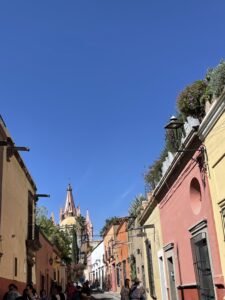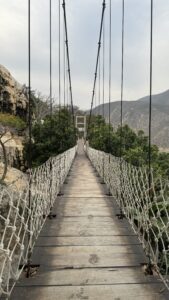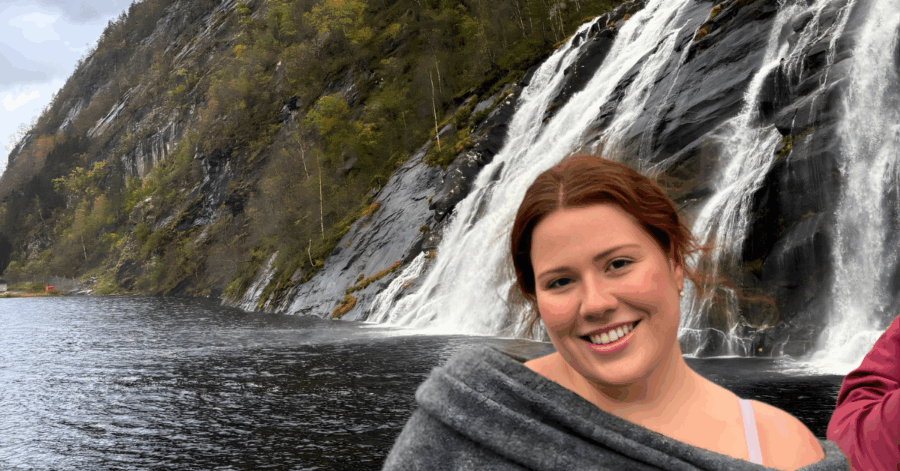
After three and a half months of living in Mexico City, I’m starting to realize I’m more than halfway through my study abroad experience.
This is a bittersweet moment, as I’m just starting to settle into the way of life in Mexico City, with its traffic, street vendors, fast energy and noise. At the same time, being away from Austin has given me a new appreciation for small things I’d never noticed while living in Texas.
I’m still taking advantage of the time I have here in Mexico. I’ve had the opportunity to explore a country with an extremely rich history and culture. I kicked off my exploration with a group trip to Teotihuacán, located about an hour outside of the city.
Teotihuacán is an ancient city filled with pyramids, with its famous Pyramid of the Sun being the largest single-phase structure in the Colombian New World and third-largest pyramid on the globe. The valley of Teotihuacán is eight miles long, and exploring the valley is essentially a walking tour of the ancient city where the Indigenous people of Mexico lived long before the Spanish arrived. We finished our tour exhausted and hungry, and stopped by a nearby restaurant to enjoy authentic Mexican food.
Another adventure unique to Mexico City is the Palacio de Bellas Artes (Palace of Beautiful Arts). Constructed in 1904, this beautiful piece of architecture is a prominent cultural center of the city where art galleries, shows and events are hosted. I had the opportunity to watch a Ballet Folklórico show in the Palacio de Bellas Artes.

Ballet Folklórico is a folk style of dance, with each state in Mexico represented by its own unique style of dance and dress. Each dance tells a story from a different region and time period of Mexican history. I left the show in awe of the bright colors, attention to detail in the dances and amazement at this part of Mexican culture.
Wanting to visit other states in Mexico, I decided to take a one-day tour to San Miguel de Allende, Guanajuato, a beautiful, traditional, colonial city known for its architecture. Many Canadians, United States citizens and Mexicans move to San Miguel de Allende to retire, so it is a relatively quiet and peaceful place. I explored the city plaza, the church and the colonial streets filled with shops and places to eat.
My second venture outside the city was to Las Grutas (The Caves) de Tolantongo in Hidalgo, Mexico. My friends and I rented a car and drove three and a half hours to a very remote city in Hidalgo, Mexico, where there are famous pools, caves and cascades.
We camped out next to the river, enjoyed a fire with marshmallows at night and swam in the pools overlooking the vast mountain range. We also swam into the natural caves and crossed a bridge overlooking the mountains. This escape from the fast-paced and cosmopolitan city was not only beautiful but also allowed me and my friends to explore more remote communities in Mexico. Along the drive, we frequently stopped to let sheep cross the road as we traveled through small towns.
Coming back into the city, I decided to take on the signature tourist activities of Mexico City, known for its numerous museums and parks. I visited el Bosque de Chapultepec (Forest of Chapultepec), which is a park with several museums, winding trails and street vendors selling snacks.

Within the park, I visited the Castillo de Chapultepec, a castle located on the top of Chapultepec Hill. The name comes from the Nahuatl word chapoltepēc, which means “on the hill of the grasshopper.”
The castle is now filled with historical relics and a beautiful garden but was once the home of the viceroyalty of Spain. The rooms where the monarchs once lived are now preserved, and you can walk through the palace.
In addition to the Castle of Chapultepec, I visited the Basilica de la Virgen de Guadalupe, the cathedral that houses the original painting of the Virgin of Guadalupe, presented to Juan Diego in 1531 on the hill of Tepeyac where the church now stands.
As Catholicism and La Virgen de Guadalupe are a large part of Mexican culture, many people visit this church, and you may see people walking on their knees to the painting as a way of giving thanks for answered prayers.
Another unique feature of Mexico that I experienced is “BiciTaxis” or Bicycle Taxis. I stood at the corner and hailed a BiciTaxi, which then took me to the center of the city. Riding in a bicycle taxi is a fun experience and something I’ve never seen in Austin. On the same day, I visited the “Tianguis,” or market, where I enjoyed delicious food and shopped around.
Reflecting on my study abroad experience now that I am more than halfway through, I can see how much I have grown. Day by day, it’s impossible to see a difference; but looking back, having to be out of my comfort zone in a new country, speaking the native language, assimilating to the customs and adjusting to a new way of life has made me grow.
Not to mention the friends I have made along the way who are from different parts of Mexico, and fellow exchange students who come from various countries. I believe that, in only a span of a few months, studying abroad has impacted my life more than I can explain. I have learned to appreciate both life here in Mexico City and the things about living in Texas that I previously took for granted.
This post was contributed by Isabel Aldrete, a Global Ambassador for Spring 2024. Isabel is a junior international relations and global studies major studying abroad in Mexico City, Mexico.






I’m amazed at how easy it seems for you to get around. kudos to you for taking advantage of the opportunity to really get to know the country, urban and rural, Mexican and International visitors. It’s no surprise that this trip has opened your eyes. May all your days be filled with this type of curiosity, no matter where you find yourself.
thanks for sharing!